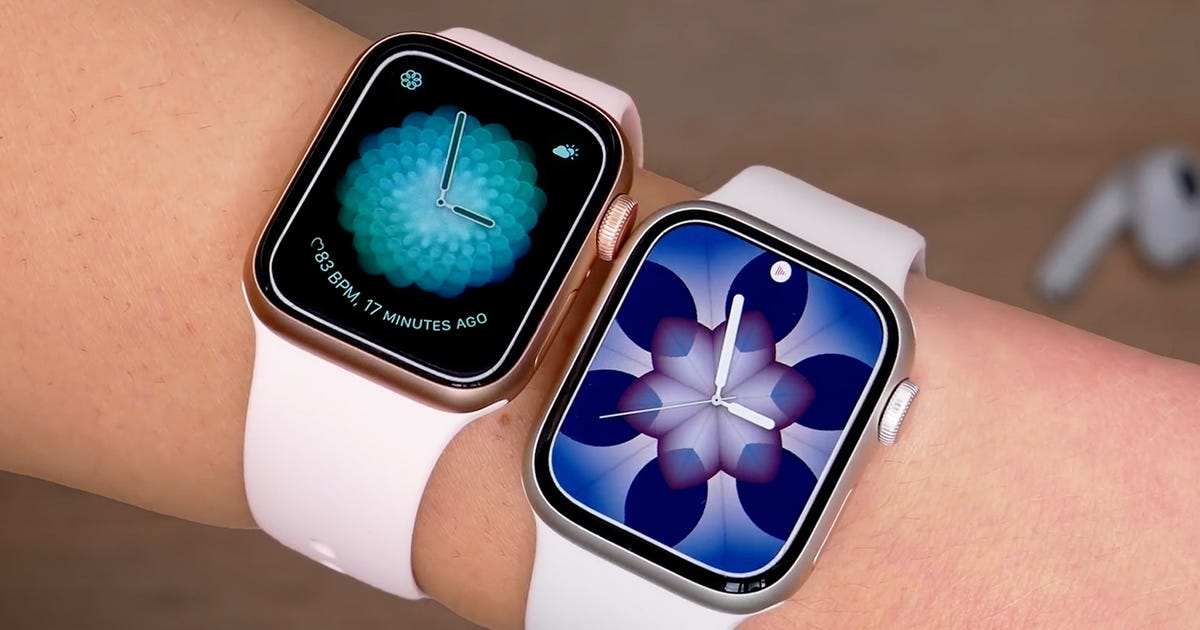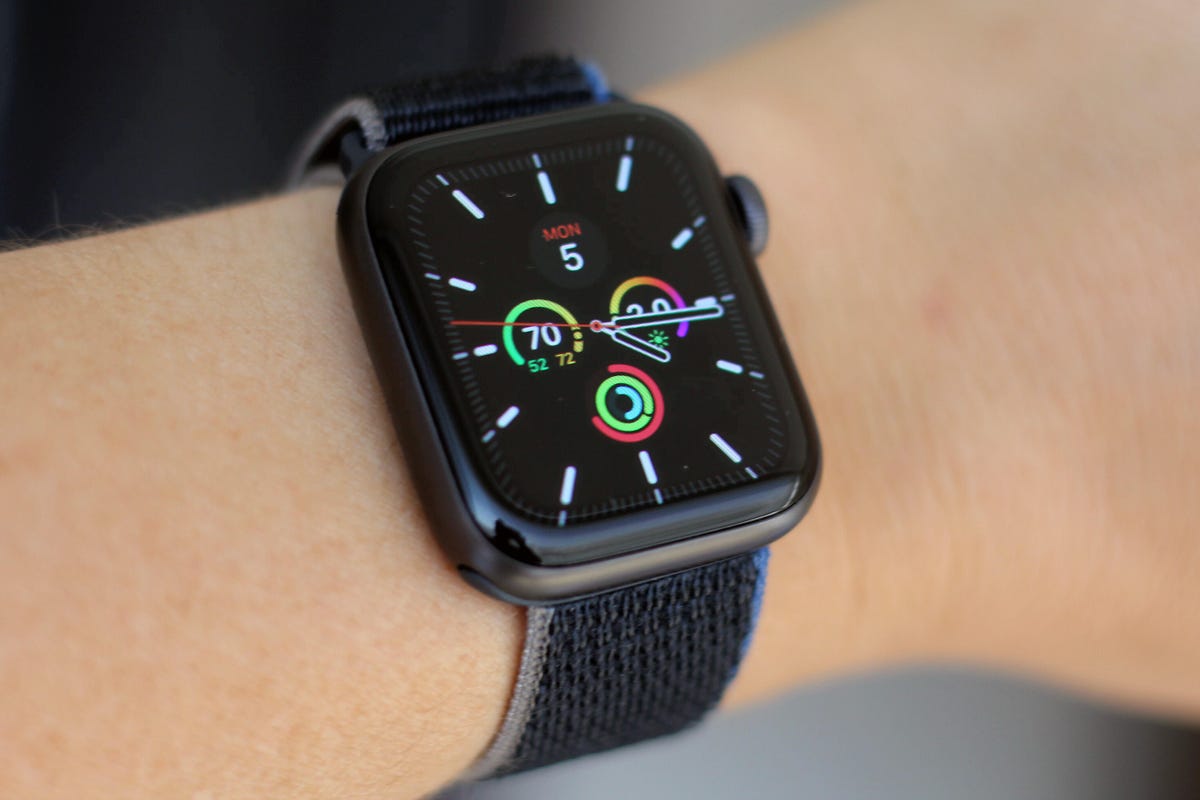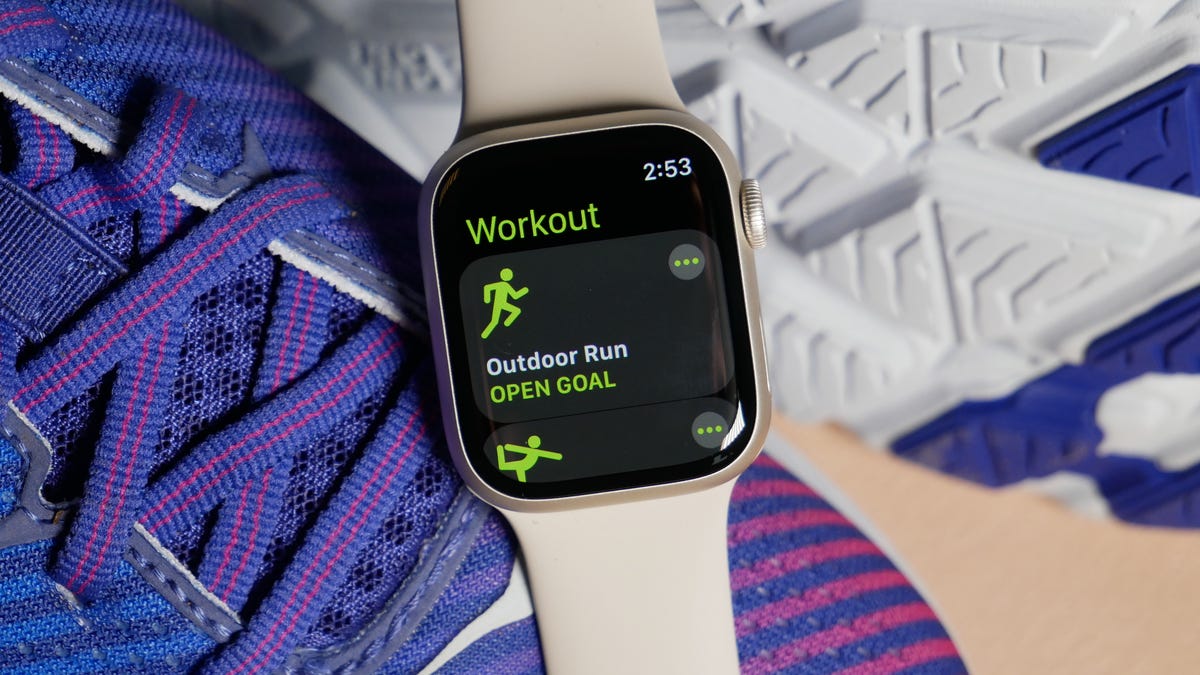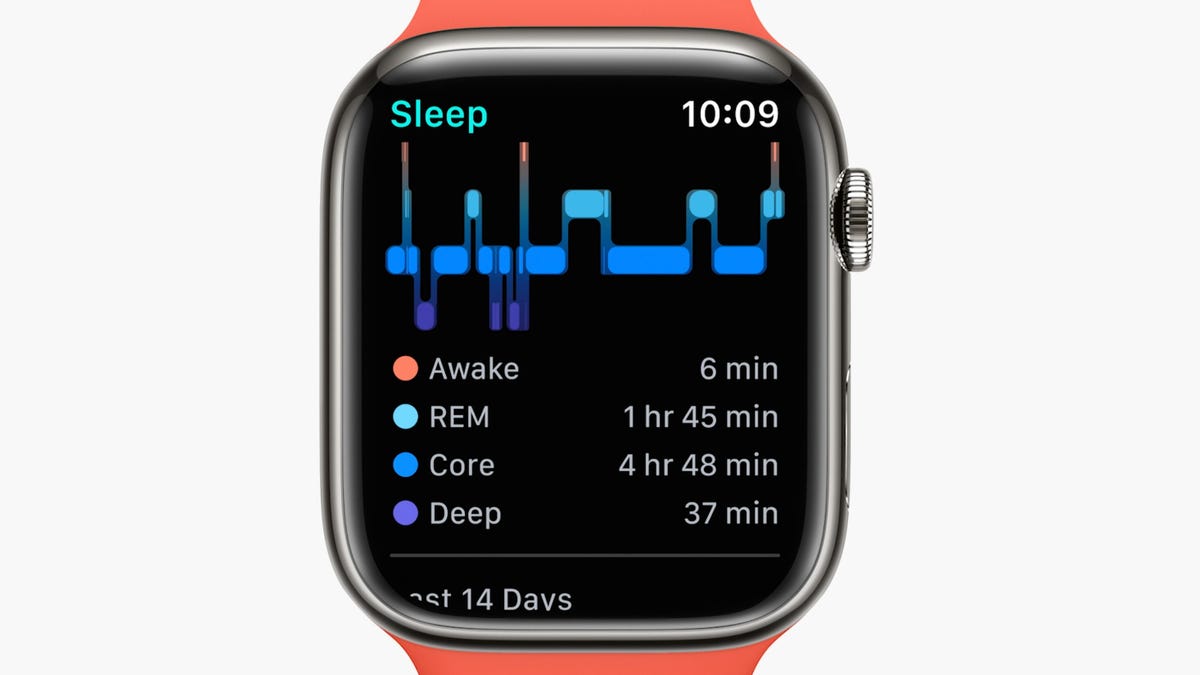Apple watch se vs series 7 apple watch se vs series 6 apple watch se vs series apple watch se vs series 8 reddit apple watch se vs se2 apple watch se vs 6 apple watch se vs apple watch 7 apple watch series 7 apple watch series apple watch se 44mm apple watch bands

Apple Watch SE vs. Series 7: Best Value Comes With Apple's Cheaper Watch
Apple Watch shoppers have three choices whether they are looking to buy their first Apple Watch or upgrade from an earlier model: There's the premium $399 (£369, AU$599) Apple Watch Series 7, which replaces the Series 6; the midrange $279 (£249, AU$429) Apple Watch SE; and the budget $199 (£179, AU$299) Apple Watch Series 3. With a big screen, faster charging and extra health features, the Series 7 has a lot to offer. But it's hard to beat the Apple Watch SE's value.
Although the cheaper $199 Series 3 can be tempting, we recommend opting for one of Apple's newer watches. The Series 3 is now four years old and can be difficult to update. Plus, it won't get Apple's new WatchOS 9 update when it launches this fall. That leaves the Series 7 and SE, and you're probably wondering how to decide between them.
Like many buying decisions, choosing the right Apple Watch comes down to how you plan to use it. If you want the newest watch that can provide more details about your health in addition to basic activity and exercise tracking, go for the Series 7.
But for those primarily interested in the Apple Watch's core functionality, you can save a lot of money without compromising much by choosing the Apple Watch SE instead. Tasks like logging workouts, checking your heart rate, setting timers and alarms with Siri, receiving notifications and using Apple Pay all work fine across both Apple Watch models. This makes it feel like the best option for most people, while the Series 7 can be considered a premium option for those with more demanding health tracking priorities.
Just remember that Apple is expected to launch a new version of the Apple Watch SE along with the Series 8 this fall. So it's worth waiting a few months if you can. Here's a closer look at how to decide which Apple Watch is right for you.
Read more: 9 Apple Watch Settings You Should Change Right Away
The Apple Watch SE's screen is spacious enough, but the Series 7 includes a key feature
The screen serves as one of the biggest differences between the Apple Watch Series 7 and the Apple Watch SE, not just in size but also in its features.
The Series 7 comes with a larger display than any other Apple Watch since Apple minimized the borders that frame the screen. As a result, the Series 7 is slightly larger and comes in 41-millimeter and 45mm sizes, compared to the SE's 40mm and 44mm size options. That roomier screen means you'll get two new watch faces, an on-screen keyboard and two additional text size options that aren't available on other Apple Watches, including the SE.

The Apple Watch Series 7 is the only model with a built-in QWERTY keyboard.
Lisa Eadicicco/CNETHaving a keyboard for responding to text messages is a nice perk, but the difference in size isn't going to mean you'll want to start writing longer text messages using your wrist. The Apple Watch SE's screen doesn't fit Apple's new keyboard, but it's still large enough to comfortably read messages and news headlines. The SE's screen is also roomier than the display used on the Apple Watch Series 3 and earlier, so if you are looking to upgrade from an Apple Watch from 2017 or earlier you will notice the difference. All told, the Series 7's bigger screen makes the experience feel more refined, but it shouldn't be the only reason you choose the Series 7 over the SE.
Instead, if this is your first Apple Watch or if you are coming from the Apple Watch Series 4 or earlier, ask yourself how much you care about having an always-on display. The Series 7's screen can show watch faces even when your wrist is down and the display is idle, unlike the Apple Watch SE. For some people, this might be a deal-breaker. After all, the Apple Watch isn't just a utilitarian device. It's also a fashion accessory, and I can imagine some people would rather flaunt a colorful watch face all the time instead of having their watch turn into a black square when the screen times out.
The always-on display is arguably more important to the overall experience than the difference in screen size. I've tested almost every Apple Watch model since the original's release in 2015, and the always-on display is one of the biggest features I tend to miss when switching from a flagship model (like the Series 6 or 7) to a budget option (like the SE or Series 3). It just makes the watch better at its two most important jobs: telling the time, and offering quick glanceable information. No more raising your wrist at the right angle or tapping the screen to check your stats during a workout.
You'll also get more color options and finishes to choose from by opting for the Series 7 over the SE. The Apple Watch Series 7 is available in aluminum, stainless steel and titanium finishes (although the latter two choices will drive up the price significantly), while the Apple Watch SE only comes in aluminum. Apple's newest watch is available in midnight (black), starlight (a mix of silver and gold), green, blue and red. The Apple Watch SE, by comparison, only comes in space gray, silver and gold.
Apple also improved the watch's durability with the Series 7 by adding dust resistance and tougher front crystal. It's a welcome change, but not one that should really factor into your buying decision unless you work in a dust-prone environment like a construction site.
The Apple Watch Series 7 is fully loaded with health sensors -- but ask yourself if you need them

All Apple Watches, including the Series 7 (pictured), the SE and Series 3, offer activity tracking. But the Series 7 offers more in-depth health measurements like ECG readings and blood oxygen saturation.
Lisa Eadicicco/CNETLooking for a smartwatch to track things like your heart rate, calories burned and distance during a run? The Apple Watch SE will be more than enough. Both smartwatches come with tools runners will appreciate, such as GPS, an optical heart rate sensor, a compass for more precise navigation and an always-on altimeter for tracking elevation in real time. Both watches also offer the same selection of exercise types in the workout app and Apple's signature Activity Rings.
Read more: What WatchOS 9 May Reveal About the Next Apple Watch
But if you want a more detailed picture of your health, consider the Apple Watch Series 7. Like last year's Series 6, Apple's new top-tier watch is the only model in the current lineup to include a blood oxygen sensor and an electrical heart sensor for taking an ECG from your wrist. The question, however, is whether you need those sensors. Apple says the Apple Watch is not intended for medical use and its readings should only serve as clues about your general wellness -- not medical advice.
With that in mind, the watch's blood oxygen and ECG readings are probably best-suited for those who might need to keep a closer eye on their overall health. They provide another piece of data you can discuss with your doctor if you're concerned about your cardiac or respiratory health.
Otherwise, the Apple Series 7 and Apple Watch SE share many of the same wellness and safety features. These include the ability to call for help with Emergency SOS, contact emergency services internationally, automatically detect when you've taken a hard fall and alert you when the noise levels in your surroundings could potentially damage your hearing. They also both include the Mindfulness app for participating in breathing and reflection exercises and the Sleep app, which monitors time spent asleep and sleeping respiratory rate.
Both Apple Watch models also work with the Apple Fitness Plus exercise service and sync with GymKit compatible exercise machines like the Peloton Bike Plus.
The Apple Watch Series 7 and Apple Watch SE have the same battery life, but the Series 7 charges faster

The Apple Watch Series 7 (pictured) charges more quickly than the SE.
Lisa Eadicicco/CNETWhen it comes to the Apple Watch's battery life, not much has changed in recent years. Instead, Apple has cut down the amount of time it takes to power up your watch with the Series 7. That makes it easier to top off the battery in the morning after a night of sleep tracking.
The Apple Watch Series 7 comes with some internal changes and a new fast charger that should enable it to replenish 80% of its battery in about 45 minutes and 100% in roughly 75 minutes, according to Apple's estimates. The Apple Watch SE, by comparison, should take 1.5 hours to charge to 80% and 2.5 hours to fully charge.
In my own experience, the Apple Watch Series 7 charged noticeably faster than the Series 6 -- which also charges more quickly than the Apple Watch SE. But these changes were only noticeable when I left the Series 7 on its charger for at least a half hour. After 30 minutes of charging, the Series 7 had gone from zero to 54% while the Series 6 had only replenished 37% of its battery.
The faster charging adds some convenience to the Apple Watch. But like its other upgrades, it's not enough of a selling point on its own.
The two watches have all the same connectivity features, but the Series 7 has a faster processor

The Apple Watch SE (pictured) has many of the same features as the Series 7 at a lower price.
Vanessa Hand Orellana/CNETAside from an always-on display and the health features mentioned above, the Apple Watch Series 7 and Apple Watch SE have a lot of the same functionality. Both watches support Apple Pay and Apple Wallet and allow you to view notifications and respond to messages from your wrist (although you'll only get the QWERTY keyboard on the Series 7).
Each watch comes with a microphone and speaker for taking phone calls and interacting with Siri and they both include 32GB of onboard storage. You can choose to buy either watch with just GPS or both GPS and cellular connectivity.
Where they differ is in their processor. The Apple Watch Series 7 comes with Apple's S7 chip, which offers the same performance as the Series 6 and is 20% faster than the SE. The difference isn't very noticeable though; navigating around the Apple Watch SE's interface still felt snappy and smooth. The Series 7 also has Apple's U1 ultra-wideband chip unlike the Apple Watch SE. That chip, which is also found in the iPhone 11, 12 and 13 and AirTags, makes it easier for the Apple Watch to communicate with nearby devices.
Ultra-wideband isn't a new technology. But it's still relatively new to consumer tech devices like smartwatches and phones, so there isn't much functionality built around it yet. For now, the most promising use cases involve making it easier for Apple devices to communicate with one another. The U1 chip improves AirDrop on the iPhone, for example, and also enables the HomePod Mini to pass off music and podcasts to your iPhone.
In theory, the U1 chip should also make the Series 7 work better as a digital car key since it improves communication with nearby devices. But Apple Watch models as old as the Series 5 also support the ability to unlock your car, so it's unclear whether the U1 chip adds much to the experience in this regard. My guess is that this chip will become more important in the future once companies like Apple build more use cases for it.
How to choose the right Apple Watch

The Apple Watch lineup includes the Apple Watch SE (left), Apple Watch Series 7 (middle) and Apple Watch Series 3 (right). But the Series 3 is four years old and difficult to update, so we recommend considering one of the other two watches instead.
Lisa Eadicicco/CNETWhen deciding between the two watches, it's best to think about how the Series 7's additional features come together to contribute to the whole experience rather than individual specs. The extra health capabilities (ECG and blood oxygen apps), larger always-on screen, faster charging and new processor make the Series 7 a better choice for those who prioritize sleep tracking and gaining a more holistic view of their health. It's also the right option for shoppers who want to make sure their Apple Watch stays relevant for years to come (since it runs on a newer chip), and don't mind spending more money to do so.
The Apple Watch SE, on the other hand, feels like the best watch for most people. It's essentially a cross between the Apple Watch Series 4 and Apple Watch Series 5, which means it still has a lot to offer for those who just want to receive notifications, track workouts and use Apple Pay. That being said, since the S5 chip in the SE is already two generations old, there's a chance it could start feeling slow over the next couple of years.
Apple Watch Series 7 vs. Apple Watch SE
| | Apple Watch Series 7 | Apple Watch SE |
|---|---|---|
| Starting price | $399 (£369, AU$599) | $279 (£249, AU$429) |
| Size | 41mm/45mm | 40mm/44mm |
| Display | Always-on with nearly 20% more screen area than the SE | Always-on and more than 30% larger than Series 3 |
| Display resolution | 352x430 (41mm), 396x484 (45mm) | 324x394 (40mm); 368x448 (44mm) |
| Durability | Water resistance; IP6X dust resistance | Water resistance |
| Sensors | Blood oxygen, electrical heart, optical heart, compass, always-on altimeter, accelerometer, gyroscope, GPS/GNSS, ambient light | Optical heart, compass, always-on altimeter, accelerometer, gyroscope, GPS/GNSS, ambient light |
| Safety features | Fall detection, noise monitoring, emergency SOS, international emergency calling | Fall detection, noise monitoring, emergency SOS, international emergency calling |
| Processor | Apple S7 system-on-a-chip | Apple S5 system-on-a-chip |
| Colors | Aluminum: midnight, starlight, green, blue red; stainless steel: silver, graphite, gold; titanium: natural, space black | Aluminum: space gray, silver, gold |
| Battery Life | Up to 18 hours, charges to 100% in 75 minutes | Up to 18 hours, charges to 100% in 2.5 hours |
| Storage | 32GB | 32GB |
| Connectivity | Wi-Fi, Bluetooth 5.0, W3 wireless chip, U1 chip, optional LTE | Wi-Fi, Bluetooth 5.0, W3 wireless chip, optional LTE |
The Apple Watch Series 7 is Apple's flagship smartwatch for a reason. Not only does it have a bigger screen than earlier Apple Watches, it's also more durable thanks to a dust and crack-resistant design. It has a blood oxygen and electrocardiogram (ECG or EKG) sensor and is available in either a 41mm or 45mm case size. You can also choose a cellular or LTE model that lets you take calls and answer messages from your wrist without your phone, although that does cost extra.
But the Apple Watch is iPhone-compatible only and the battery life generally lasts 18 hours with typical use, less than many of its competitors. Read our Apple Watch Series 7 review.
§
This story is part of WWDC 2022, CNET's complete coverage from and about Apple's annual developers conference.
What's happening
Apple's WatchOS 9 update will bring new athletic performance metrics to the Apple Watch, among other key improvements to health and fitness tracking.
Why it matters
The update could be setting the stage for the rumored rugged Apple Watch expected to debut this year.
What's next
Apple will launch WatchOS 9 in the fall, possibly alongside three new Apple Watch models.
If WatchOS 9 serves as any indication, the Apple Watch's future is all about health and fitness. That message was front and center in June when Apple unveiled the new software, which is now available in beta ahead of its fall launch.
The update will bring more sports-performance tracking metrics (especially for runners), deeper sleep monitoring and tools for logging medication. It's impossible to know what to expect until Apple announces its next smartwatch (or smartwatches). But WatchOS 9's focus on athletic training seemingly sets the stage for the rumored Apple Watch Explorer Edition, which we might see later this year.
Read more: This Stylish, Luxury Hybrid Watch (Almost) Made Me Ditch My Apple Watch
It also suggests Apple wants its smartwatch to appeal to pro athletes, casual exercise enthusiasts and those who need to monitor cardiac health all at the same time. The next crop of Apple Watches rumored for the fall will likely come with new hardware to better support that vision -- hopefully with better battery life, too.
WatchOS 9's workout features would be a great for an Explorer Edition Apple Watch

The Apple Watch Series 7
Lexy Savvides/CNETApple sprinkled a bunch of new workout tools and metrics throughout WatchOS 9. These include new running data points like stride length and ground contact time, the ability to track heart rate zones, interval training, a multisport workout type for triathlons and kickboard detection for swimmers. The announcement also comes after Apple made improvements to the Apple Watch's cycling detection last year.
Only Apple knows what's in store for the future. But it feels like no coincidence that this update is coming as Apple is expected to launch a rugged Apple Watch designed for extreme sports this fall. Bloomberg reports an Apple Watch with extra impact resistance similar to Casio's G-Shock watches could be in the works. The watch is sometimes referred to as the Explorer Edition internally and may have a rubberized casing for additional durability, the report said. The device would reportedly be marketed as an alternative option for athletes and hikers alongside the standard Series 8 and next-generation Apple Watch SE.
Read more: iOS 16's Lock Screen Upgrades Make the iPhone More Like a Smartwatch
The Apple Watch already has plenty to offer fitness buffs, with many workout choices, activity goals and reminders, heart rate notifications and metrics like VO2 max and elevation. But until WatchOS 9 arrives, the Apple Watch will lack running-specific features that athletes might find useful. Garmin's running watches, for example, include tools like training programs for specific types of races, pace guidance and running metrics like cadence and stride length, among other features that vary by the model.
The Apple Watch is already the world's most popular smartwatch with 36.1% of global shipments in the first quarter of 2022, according to Counterpoint Research. With the new measurements geared toward runners coming in WatchOS 9, Apple could further solidify its grip on the market by appealing to the more niche competitive sports audience.
Even with the new features in WatchOS 9, the Apple Watch still won't offer quite as much feedback for runners as some specialized watches. But the new software certainly brings the Apple Watch closer than ever before.
What else WatchOS 9 might tell us about the Apple Watch's future

The Apple Watch's new Sleep Stages feature in WatchOS 9
Screenshot/CNETApple's emphasis on fitness was at the heart of its WatchOS 9 announcement. But some of the software's other updates might also suggest Apple's future direction. For example, the company did more on sleep tracking by introducing Sleep Stages, a feature that analyzes the amount of time spent in various phases of slumber. Apple is playing catch-up in this regard; rival fitness trackers from Fitbit, Oura and Samsung have supported this feature for years.
Apple's expansion in sleep tracking indicates it expects Apple Watches to be worn overnight more frequently. That makes me believe Apple could be planning some type of improvement to the Apple Watch's battery life, although there's no way to know for sure until the company reveals its next watch.
Apple says its smartwatch can last for 18 hours on a single charge, and anecdotally I typically get about one to two days out of it before it needs a power boost. The Apple Watch's battery life hasn't changed meaningfully in years, but Apple has worked around this by implementing faster charging speeds with the Series 6 and 7.
Apple will likely continue down this path rather than dramatically improving the watch's battery life. But there's also a chance Apple could introduce a new low-power mode with more functionality than the watch's current power reserve feature, says Bloomberg. It was supposed to launch with WatchOS 9, according to the report, although Apple didn't mention a new low-power option during Monday's event.
Considering that battery life has been one of the Apple Watch's persistent criticisms -- and not to mention Bloomberg's reliable track record -- I wouldn't be surprised to see this capability arrive in the future. And remember: Apple introduced new WatchOS 8 features for cyclists alongside the Apple Watch Series 7 during its fall product event in 2021. So there's a chance Apple could have more software features to announce later this year.
WatchOS 9 also provides another signal that Apple is expanding its efforts in general health and wellness. A new feature called AFib History will allow those diagnosed with atrial fibrillation to access more information about their condition, such as an estimate of how often their heart rhythm is showing signs of A-fib. Another highlight in WatchOS 9 is the ability to track prescriptions and receive medication reminders.
These updates indicate Apple sees its watch as a tool for tracking bodily changes over time that can be shared with physicians. And if reports from Bloomberg and The Wall Street Journal prove accurate, Apple will take that idea a step further by adding a temperature sensor to the Series 8.
Many of the Apple Watch's major turning points have historically been tied to new hardware releases. The Series 3, for example, was the first model to support cellular connectivity, making the Apple Watch feel like a stand-alone product rather than an iPhone companion. The Series 4 brought ECG monitoring and fall detection, broadening the Apple Watch's role as a health device.
WatchOS 9 isn't as big of a leap forward as those launches. But it will bring functionality that could be crucial in Apple's mission to make the Apple Watch the ultimate health and fitness device. And that's very telling of Apple's immediate and long term plans for the Apple Watch.
Source
